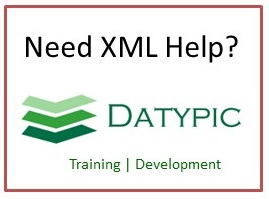ProcessSupplierPartyMaster
ProcessSupplerPartyMaster is used to Processhronize SupplierPartyMaster data across systems. Using the Process indicates that the sender of the Process is the owner of the date and the receiver of the Process is a sub-system that must accept the data as provided.
Element information
Namespace: http://www.openapplications.org/oagis/10
Schema document: ProcessSupplierPartyMaster.xsd
Type: ProcessSupplierPartyMasterType
Properties: Global, Qualified, ID: oagis-id-b3f259059b9e4ddc82efcf098cb9fe4d
Content
- Sequence [1..1]
- ApplicationArea [1..1] Provides the information that an application may need to know in order to communicate in an integration of two or more business applications. The ApplicationArea is used at the applications layer of communication. While the integration frameworks web services and middleware provide the communication layer that OAGIS operates on top of.
- DataArea [1..1] Is where the information that the BOD message carries is provided, in this case ProcessSupplierPartyMaster. The information consists of a Verb and one or more Nouns. The verb (Process) indicates the action to be performed on the Noun (SupplierPartyMaster).
from type BusinessObjectDocumentType
Attributes
| Name | Occ | Type | Description | Notes |
|---|---|---|---|---|
| releaseID | [1..1] | NormalizedStringType | OAGIS Release this BOD Instances belongs or the OAGIS release that the derivative work is based on. | from type BusinessObjectDocumentType |
| versionID | [0..1] | NormalizedStringType | Indicates the version of the given BOD definition. | from type BusinessObjectDocumentType |
| systemEnvironmentCode | [0..1] | SystemEnvironmentCodeContentType | Indicates whether this BOD is being sent in a "Test" or a "Production" mode. If the BOD is being sent in a test mode, it's information should not affect the business operation. However, if the BOD is sent in "Production" mode it is assumed that all test has been complete and the contents of the BOD are to affect the operation of the receiving business application(s). | Default value is "Production". from type BusinessObjectDocumentType |
| languageCode | [0..1] | LanguageCodeContentType | Indicates the language that the contents of the BOD is in unless otherwise stated. | Default value is "en-US". from type BusinessObjectDocumentType |
Sample instance
<ProcessSupplierPartyMaster releaseID="normalizedString"> <ApplicationArea> <Sender> <LogicalID>normalizedString</LogicalID> <ComponentID>normalizedString</ComponentID> <TaskID>normalizedString</TaskID> <ReferenceID>normalizedString</ReferenceID> <ConfirmationCodes>... </ConfirmationCodes> <AuthorizationID>normalizedString</AuthorizationID> </Sender> <Receiver> <LogicalID>normalizedString</LogicalID> <ComponentID>normalizedString</ComponentID> <ID/> </Receiver> <CreationDateTime></CreationDateTime> <Signature> <!--any element--> </Signature> <ScenarioID>normalizedString</ScenarioID> <CorrelationID>normalizedString</CorrelationID> <BODID>normalizedString</BODID> <Extension> <AnyExtension> <!--any element--> </AnyExtension> <Amount/> <Code/> <DateTime></DateTime> <ID/> <Indicator>true</Indicator> <Measure/> <Name/> <Number>1.0</Number> <Quantity/> <Text/> <Time></Time> <ValueText>string</ValueText> </Extension> </ApplicationArea> <DataArea> <Process> <ActionCriteria>... </ActionCriteria> </Process> <SupplierPartyMaster> <ID/> <PartyIDSet>... </PartyIDSet> <TaxIDSet>... </TaxIDSet> <TaxID>normalizedString</TaxID> <DUNSID>normalizedString</DUNSID> <CAGEID>normalizedString</CAGEID> <DODAACID>normalizedString</DODAACID> <BICID>normalizedString</BICID> <SCACID>normalizedString</SCACID> <AccountID>normalizedString</AccountID> <Name/> <Location>... </Location> <Contact>... </Contact> <AccountIDs>... </AccountIDs> <PaymentTermID>normalizedString</PaymentTermID> <PaymentMethodCode>token</PaymentMethodCode> <TaxExemptCodes>... </TaxExemptCodes> <Description/> <Note/> <FinancialParty>... </FinancialParty> <CreationDateTime></CreationDateTime> <LastModificationDateTime></LastModificationDateTime> <Status>... </Status> <ParentParty>... </ParentParty> <ChildParty>... </ChildParty> <Party>... </Party> <PartnerRoleCodes>... </PartnerRoleCodes> <SalesContact>... </SalesContact> <ShippingContact>... </ShippingContact> <CustomerServiceContact>... </CustomerServiceContact> <Extension>....................................... </Extension> </SupplierPartyMaster> </DataArea> </ProcessSupplierPartyMaster>



